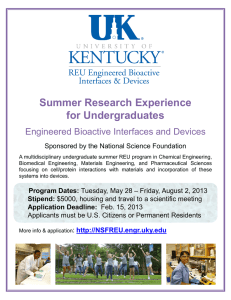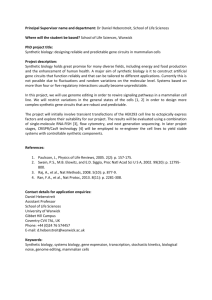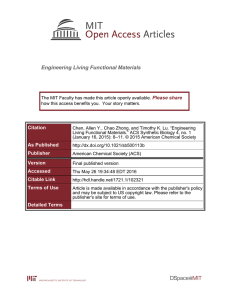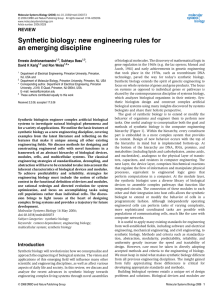Statement Sort Statement 1:
advertisement
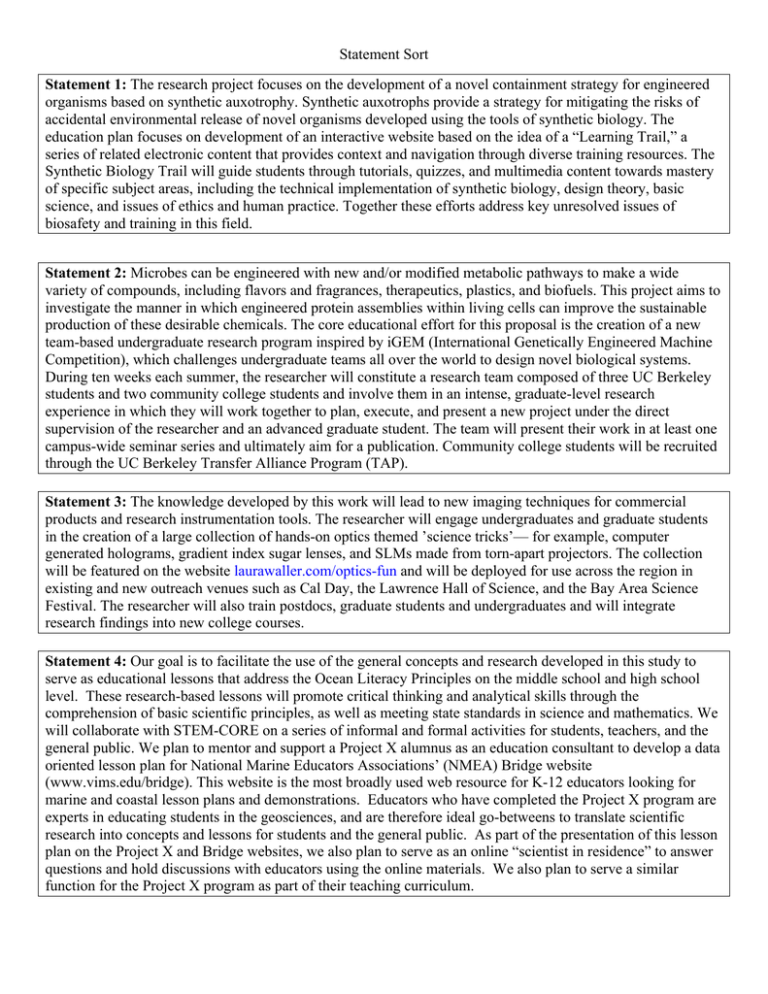
Statement Sort Statement 1: The research project focuses on the development of a novel containment strategy for engineered organisms based on synthetic auxotrophy. Synthetic auxotrophs provide a strategy for mitigating the risks of accidental environmental release of novel organisms developed using the tools of synthetic biology. The education plan focuses on development of an interactive website based on the idea of a “Learning Trail,” a series of related electronic content that provides context and navigation through diverse training resources. The Synthetic Biology Trail will guide students through tutorials, quizzes, and multimedia content towards mastery of specific subject areas, including the technical implementation of synthetic biology, design theory, basic science, and issues of ethics and human practice. Together these efforts address key unresolved issues of biosafety and training in this field. Statement 2: Microbes can be engineered with new and/or modified metabolic pathways to make a wide variety of compounds, including flavors and fragrances, therapeutics, plastics, and biofuels. This project aims to investigate the manner in which engineered protein assemblies within living cells can improve the sustainable production of these desirable chemicals. The core educational effort for this proposal is the creation of a new team-based undergraduate research program inspired by iGEM (International Genetically Engineered Machine Competition), which challenges undergraduate teams all over the world to design novel biological systems. During ten weeks each summer, the researcher will constitute a research team composed of three UC Berkeley students and two community college students and involve them in an intense, graduate-level research experience in which they will work together to plan, execute, and present a new project under the direct supervision of the researcher and an advanced graduate student. The team will present their work in at least one campus-wide seminar series and ultimately aim for a publication. Community college students will be recruited through the UC Berkeley Transfer Alliance Program (TAP). Statement 3: The knowledge developed by this work will lead to new imaging techniques for commercial products and research instrumentation tools. The researcher will engage undergraduates and graduate students in the creation of a large collection of hands-on optics themed ’science tricks’— for example, computer generated holograms, gradient index sugar lenses, and SLMs made from torn-apart projectors. The collection will be featured on the website laurawaller.com/optics-fun and will be deployed for use across the region in existing and new outreach venues such as Cal Day, the Lawrence Hall of Science, and the Bay Area Science Festival. The researcher will also train postdocs, graduate students and undergraduates and will integrate research findings into new college courses. Statement 4: Our goal is to facilitate the use of the general concepts and research developed in this study to serve as educational lessons that address the Ocean Literacy Principles on the middle school and high school level. These research-based lessons will promote critical thinking and analytical skills through the comprehension of basic scientific principles, as well as meeting state standards in science and mathematics. We will collaborate with STEM-CORE on a series of informal and formal activities for students, teachers, and the general public. We plan to mentor and support a Project X alumnus as an education consultant to develop a data oriented lesson plan for National Marine Educators Associations’ (NMEA) Bridge website (www.vims.edu/bridge). This website is the most broadly used web resource for K-12 educators looking for marine and coastal lesson plans and demonstrations. Educators who have completed the Project X program are experts in educating students in the geosciences, and are therefore ideal go-betweens to translate scientific research into concepts and lessons for students and the general public. As part of the presentation of this lesson plan on the Project X and Bridge websites, we also plan to serve as an online “scientist in residence” to answer questions and hold discussions with educators using the online materials. We also plan to serve a similar function for the Project X program as part of their teaching curriculum.


